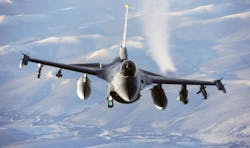Artificial intelligence (AI) won simulated dogfights against a human F-16 pilot, 5-0; what does that mean?
PATUXENT RIVER NAS, Md. – The U.S. military experiment called the AlphaDogfight simulation wrapped up last week. On the face of it, man lost badly to machine. In fact, the human F-16 jet fighter pilot, call sign “Banger,” lost all five simulated dogfights to an artificial intelligence agent (AI) from Heron Systems Inc. in California, Md. Forbes reports. Continue reading original article
The Military & Aerospace Electronics take:
26 Aug. 2020 -- Heron systems develops autonomous agents and multi-agent systems powered by AI. The company's system first battled its way past competing AI systems from Boeing, Aurora Flight Sciences, EpiSys Science, Georgia Tech Research Institute, Lockheed Martin, Perspecta Labs, PhysicsAI, and SoarTech.
U.S. Air Force Col. Dan Javorsek, head of the U.S. Air Force Air Combat Evolution (ACE) program, balanced the apparent dogfight success of the AI agent against the limitations of the simulation to add perspective to what appeared to be a straightforward AI victory.
The F-16 jet fighter pilot said the exercise led him to trust the dogfighting algorithms, particularly their demonstrated maneuvering, their rapid decision-making ability, and their targeting capability - but with caveats.
John Keller, chief editor
Military & Aerospace Electronics
